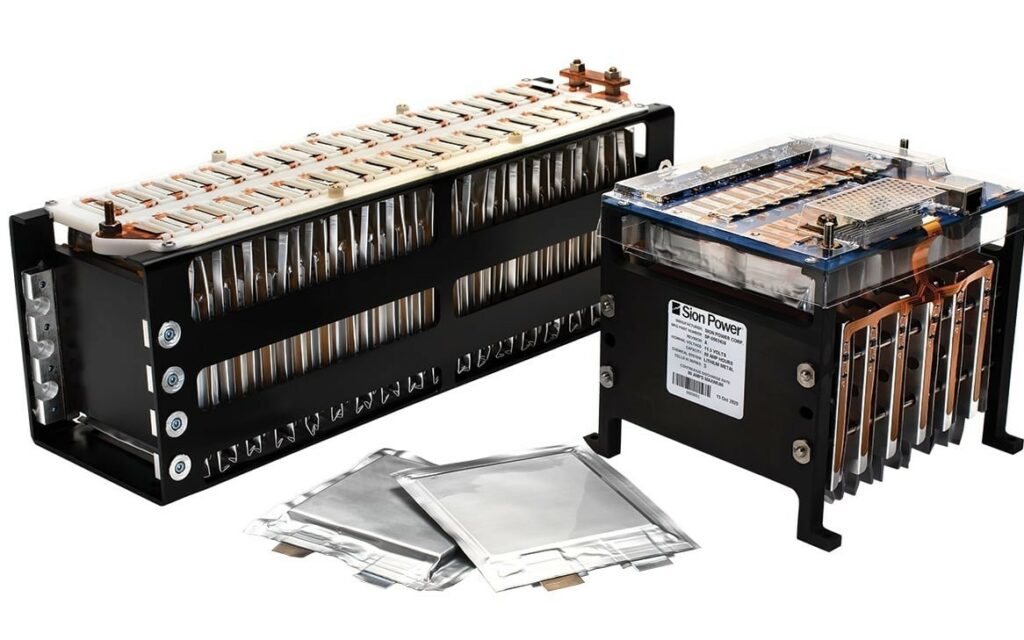Lithium-metal cell packs a punch

(Courtesy of Sion Power)
With a specific energy of 400 Wh/kg and an energy density of between 700 and 810 Wh/litre, Sion Power’s Licerion-EV rechargeable lithium-metal cells are attracting great interest from EV developers, and the company is in discussion with multiple OEMs to further the development of the technology (writes Peter Donaldson).
The company’s senior applications engineer Kyle Smith says, “We have a prototype line where we manufacture the cells at our base in Tucson, Arizona, and we are in the process of building a pilot line to scale that up. In automotive parlance, we are in a kind of pre-A-sample phase.”
A lithium-metal cell can achieve these high energy figures because it uses a lithium metal anode that can pack in many more lithium ions than is possible with the graphite anode of a conventional lithium-ion cell.
“We use the same kind of electrolytes, separators and cathodes as other lithium-ion cells, but by replacing that intercalated graphite anode with a lithium metal anode we can roughly double the specific energy,” Smith says.
Sion Power’s standard product for EV applications at the moment is a 17 Ah pouch cell, which has been independently verified at 400 Wh/kg and 700-810 Wh/litre. The two energy density figures refer to different states of charge affecting the size of the flexible pouch cell. “When it’s fully discharged it’s thinner, and when you fully charge it up it’s thicker,” Smith says.
While the main concern with lithium-metal batteries has long been the growth of metal dendrites – tree-like structures that grow and penetrate separators inside cells and create short-circuits – Smith argues that this problem has effectively been solved.
“Dendrites are what everybody is concerned about with lithium metal, because that is the first problem you run into if you try to do a direct swap, so we have a three-pronged approach to controlling and eliminating dendrite growth,” he says. “We have physical protection on our lithium anode, chemical protection built into the electrolyte, and we have pack-level protections.”
Combined with carefully designed charge and discharge profiles, he says these measures eliminate dendrite growth. “In terms of eliminating dendrites, we have a very high level of confidence. We’ve been doing this for a long time.”
The next major hurdle is assuring safety from thermal runaway propagation in what is a very high energy density cell chemistry, even though the lithium metal anode is not the source of problems. “Our cells are no more dangerous than any other lithium-ion ones, in that the cathode is the instigator.”
He adds that the company has tested many cathodes and has found it is always cathode failure that leads to cell failure. “We are actually more robust than a typical lithium-ion cell because of what it takes to get a cell to fail,” he says.
ONLINE PARTNERS































